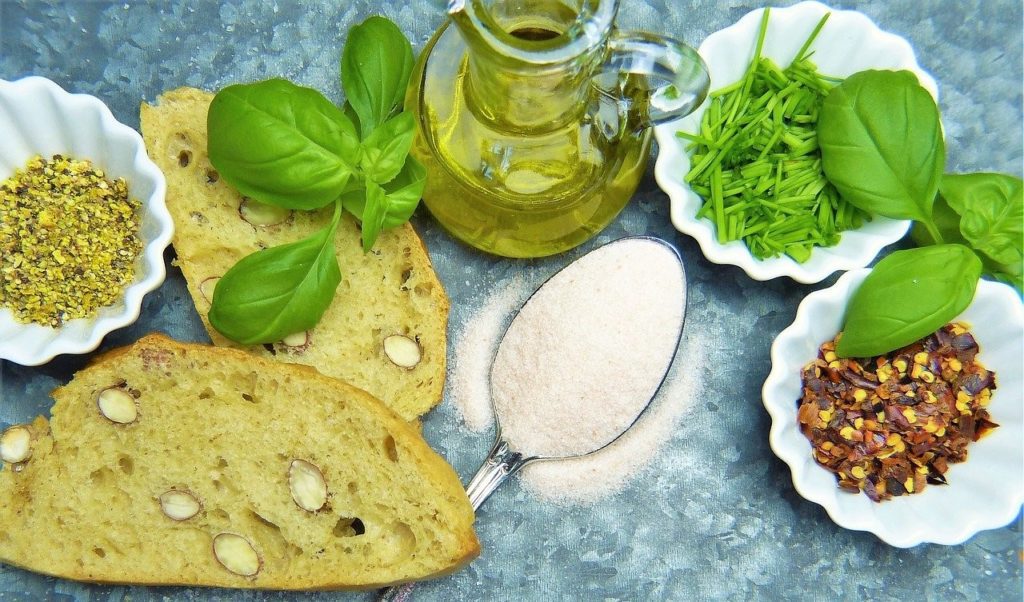The pH in food is the measure of the alkalinity or acidity of the product. pH scales generally range between 0 and 14. pH 7 in food is considered neutral while something less than 7 is considered acidic. pH levels above 7 are considered plain or alkaline.
Acidity regulator [INS 330] is used for altering and controlling the alkalinity or acidity on specific levels crucial for food safety, taste, and processing. Inadequate pH control can result in the growth of harmful bacteria in food products. Such food products can be dangerous for the health of an individual.
An individual’s sense of taste can identify major differences in pH within complicated food systems. Acidic products generally taste sour while alkaline items taste bitter.
Good examples of foods high in their acid content include citrus fruits like grapefruit, lemon, and orange, yogurt, and juices. Good examples of alkaline items include baking soda and egg white.
In this context, you must make it a point to understand what acidity regulators ins 330 are and how they work.

Related Reading:
Know everything about INS 415, from benefits to drawbacks.
Table of Contents
Basic Know-How About INS 330
Acidity Regulator [INS330] is an Acidity Regulator, also called Citric Acid. Citric Acid 330 is generally used in the form of an additive. It is completely different from the natural citric acid found in different citrus fruits. Acid regulator 330 is chemically manufactured by fermenting molasses with Aspergillus Niger mold.
INS 330 works in the form of a pH control element across the industry for food. It helps in preventing fruits from getting brown. It is even used in the form of an acidulant for the manufacture of jam and beer.
Citric Acid helps in stabilizing confectionery and sweets, which further helps in preventing sugar crystallization. It is even added to different medicines for stabilizing and preserving their ingredients and for masking or enhancing the taste of syrup-based and chewable medications. This acidity regulator is colorless and has a crystalline nature

Advantages of Acidity Regulator (INS 330)
Speaking of the functionalities and advantages of the Acidity Regulator [INS330], it helps in boosting the action of different antioxidants.
1. Used as an acid regulator
Nevertheless, it is in no way an antioxidant itself. Citric acid is generally used in the form of an acid regulator and aroma element. INS 300 acidity regulator helps in increasing gel power in marmalades and decreasing enzymatic charring in different fruits and related products.
2. Helps in nutrient absorption
It helps in the improvement of nutrient absorption. It enhances the bioavailability of different minerals which further helps the human body in absorbing them in a better way.
3. Used in treating kidney stones
Acidity Regulator [INS330] also helps in preventing and treating the formation of kidney stones. In addition to this, Acidity Regulator 330, when used as potassium citrate, is of good help in breaking kidney stones that are already formed within the body.
Side Effects of using Acidity Regulator (INS 330)
Now that you are well aware of what INS 330 means, it is important for you to get an idea of the side effects of using citric acid in excessive amounts. It might be very clear to you that citric acid or Acidity Regulator [INS330] is a basic element of the cells in the human body and it gets degraded and is even used by the human body without causing any major side effects.
1. May cause allergies
There have been reports of intolerance or pseudo-allergic reactions but only rarely. Individuals who are intolerant to the product need to avoid all kinds of berries, soft fruits, and items containing INS 330. One popular myth about the product is that it causes cancer. But studies over time have kaput this myth.
Individuals who have a strong allergy to INS 330 should be very careful. They must make it a point to avail of emergency assistance if they see any symptoms of an allergy when taking the product. Some common symptoms to watch out for are difficulty breathing, hives, and swelling of the tongue, lips, face, and throat.
2. May cause teeth erosions
When taken in large amounts, this acidity regulator can even result in tooth erosions.

3. Can damage skin
If it comes in direct contact with the human skin for a very long time, it might result in swelling and stinging. It might even cause a burning sensation if, by chance, it gets into the eyes. In such situations, the eyes should be washed very well using warm water.
4. May cause Stomach issues
Eczema and stomach ailments might be common in people who are allergic to this acid. However, the majority of individuals can use it without any problem. Next time if you find it on the label of ingredients on the food products you are purchasing, there is no need for you to worry.
Guide on Selection
You can easily find Acidity Regulator INS 300 or Citric Acid in different grocery shops. The product is available in packets or tiny shakers, labeled as citric acid or sour salt. Always make it a point to go for sealed packages. Also, check the expiry date of the product. It is always a good deal to go for an Acidity Regulator – INS 330 that comes from reputed manufacturers.
Related Reading:
How to Use the Acidity Regulator INS 330?
Citric acid is even used in the form of a substitute for lemon juice or vinegar in different culinary dishes. It fills in space for a completely pure acid. Different food products contain this acid regulator in huge amounts.
These include beer, bakery items, cider, cheese, biscuits, ice creams, cake mixes, jellies, jams, sorbets, sauces, preserves, sweets, soups, wine, vegetables, and tinned fruits. The regulator is even added to different canned vegetables and fruits for protecting them against food poisoning or botulism caused by bacteria.

Dietary Limitations – Things You Need to Know While Using it
Citric acid is an integral part of the important metabolic routes in the cells of the body. Huge amounts of this acid are found in strawberries, kiwi, and citrus fruits. However, there are certain dietary limitations to using the product. It can easily be consumed by vegetarian and vegan individuals and even by different religious communities. It will not cause any allergies in individuals who strongly react to citrus fruits and oranges. This is mainly because it is commercially made using sugar and not fruits.
Majority of the fruit infuser bottles available in the market feature INS 330 acidity regulatory compatibility mechanism. These bottles are designed for making the infusion of vegetables and fruits easy in water. They even have split sections where fruits and water can be stored. They are INS330 compatible, which means they can be used for slicing and infusing fruits high in their citric acid content.
Related Reading:
Read here uses, function, composition, pros and cons about Raising Agent 450.
Frequently Asked Questions
1. What is Acidity Regulator (INS 330)?
Acidity Regulator (INS 330) is commonly known as citric acid. It is a naturally occurring acid found in citrus fruits like lemons and oranges. In food processing, it is used to control the acidity levels of products to enhance flavor, preserve ingredients, and maintain stability.
2. How does Acidity Regulator (INS 330) work?
Acidity Regulator (INS 330) works by adjusting the pH level of food and beverages. By either increasing or decreasing the acidity, it helps to balance the taste, inhibit the growth of microorganisms, and prevent spoilage. This regulation is crucial for both the flavor profile and the shelf-life of various food products.
3. Is Acidity Regulator (INS 330) safe to consume?
Yes, Acidity Regulator (INS 330) is safe to consume. It has been approved by food safety authorities worldwide, including the FDA and EFSA. Citric acid is a natural component of many fruits and vegetables and is widely used in food production without adverse effects when consumed in typical amounts.
4. What types of foods commonly contain Acidity Regulator (INS 330)?
Acidity Regulator (INS 330) is found in a variety of foods and beverages. Common examples include soft drinks, fruit juices, candies, jams, jellies, canned fruits, and dairy products. It is also used in baking powders and as a preservative in processed foods.
5. Are there any side effects associated with Acidity Regulator (INS 330)?
For most people, Acidity Regulator (INS 330) does not cause any side effects when consumed in typical dietary amounts. However, individuals with citric acid intolerance or allergies may experience gastrointestinal discomfort, such as stomach cramps or diarrhea. It’s always best to consult a healthcare provider if you have any concerns about food additives.
Know everything about INS 415 (Xanthan Gum) here.
Final Words
There are some strict limitations when it comes to using the INS 330 for people who are highly allergic to the compound. But in other cases, it might be useful because it does not have any major side effects.


